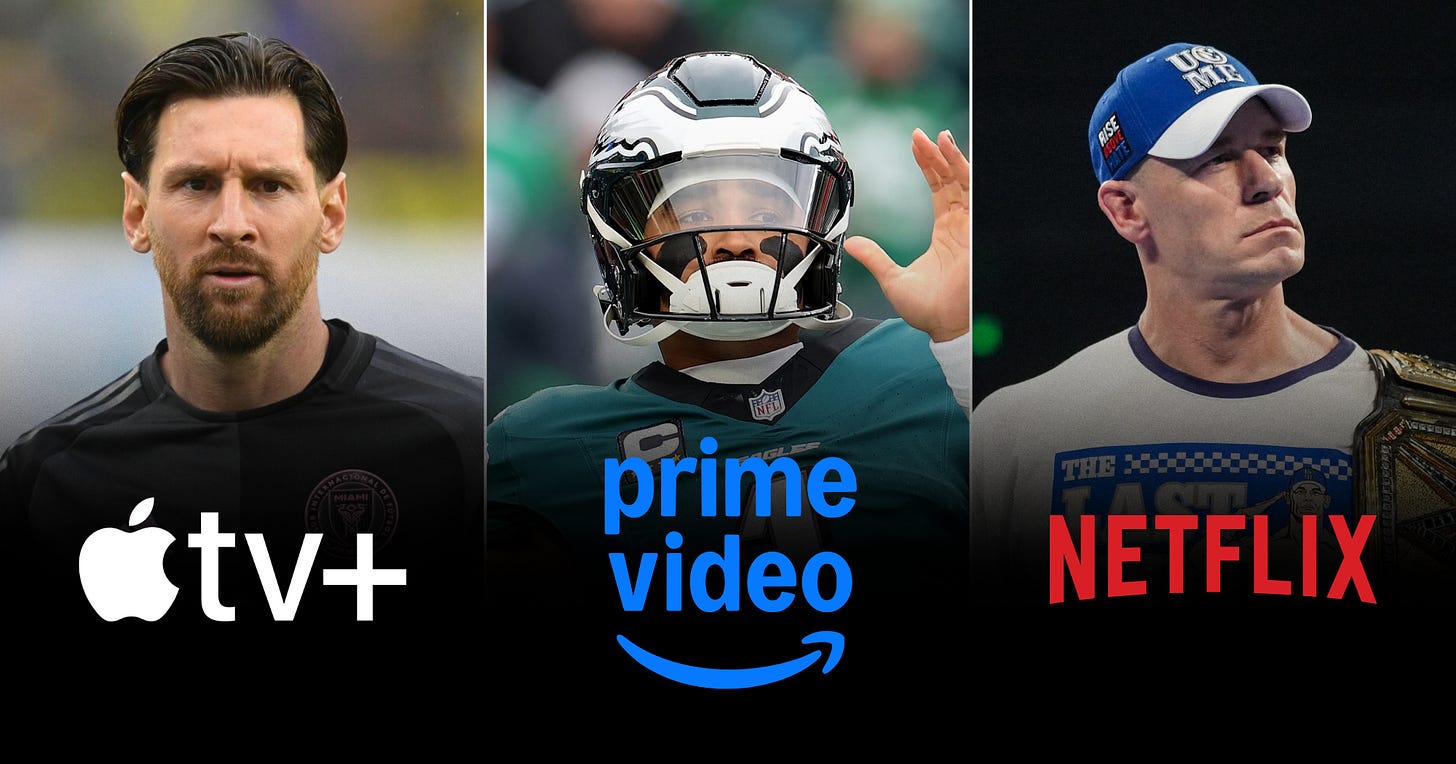Tech Giants Are Cashing In On Sports Broadcasting
Apple, Amazon and Netflix are acquiring premium rights across major leagues, reshaping the economics and strategy of global sports media.
For years, sports broadcasting was the stronghold of traditional networks. Now, tech giants are systematically acquiring premium rights, using sport as a lever for retention, ecosystem loyalty and international scale. Apple, Amazon and Netflix have moved beyond experiments. Their investments in leagues from the NFL to WWE suggest long-term infrastructure plays, not content buys, the industry is already adjusting to this new power axis.
Apple took its first live rights in 2022 with Friday Night Baseball, the real landmark came in 2023, when it signed a 10-year global agreement worth $2.5B to exclusively stream Major League Soccer. The MLS Season Pass—available only through Apple—covers all league matches, Leagues Cup fixtures and MLS Next Pro. Now, Apple is negotiating for U.S. Formula 1 rights, further extending its premium sports portfolio.
Amazon began earlier and scaled faster. It streamed Thursday Night Football from 2017, then secured exclusivity in 2022 in a deal worth over $1B per year until 2033. The NFL package includes alternate feeds, live stats and Twitch simulcasts. Amazon also holds Champions League rights in the UK, WNBA coverage in the U.S., ATP tennis, US Open matches and cricket rights in India through Prime Video.
In 2019, Amazon broke into the Premier League market, acquiring 20 UK matches per season. While it opted out of that deal beyond 2025, the company remains active in European football, surf, and niche rights. Its recent acquisition of a U.S. NBA rights package from 2025—66 regular-season and playoff games annually for $1.8B per year—signals growing intent to centralise major sports under Prime.
Netflix approached sports differently, beginning with docuseries. Drive to Survive, Break Point and Full Swing reshaped how casual fans discovered F1, tennis and golf. In 2023, it launched its first live events: The Netflix Cup (golf meets F1) and The Netflix Slam (a Nadal vs Alcaraz tennis showcase). These exhibitions tested infrastructure and confirmed Netflix’s readiness to handle large-scale live delivery.
By 2024, Netflix escalated sharply. It secured two NFL Christmas Day games annually from 2024 to 2026, marking its entry into premium live rights. In early 2025, it announced a landmark $5B, 10-year agreement to stream WWE Raw, starting globally in January. It also acquired U.S. rights to the FIFA Women’s World Cup for both the 2027 and 2031 tournaments, expanding into major football.
The strategic differences are clear. Apple curates exclusive, device-integrated packages designed to enhance loyalty across Apple TV, iOS and Apple One. Amazon builds wide-rights bundles into Prime, supported by layered engagement tools like X-Ray, Alexa voice access and multi-stream options. Netflix focuses on eventisation, positioning live sport as a tool to boost ad-tier usage, reduce churn and extend user time on platform.
Financially, these are no longer experimental budgets. Apple’s MLS deal is worth $250M per year, Amazon’s NFL commitment exceeds $1B annually, Netflix’s WWE deal totals $500M per year, with live infrastructure costs layered on top. These investments now compete directly with ESPN, Sky Sports and Warner Bros. Discovery, pushing rights inflation and fragmenting global distribution.
Traditional broadcasters face new pressures. They must compete against platforms with built-in device ecosystems, lower marginal distribution costs and vertically integrated subscriber data. While Disney, Sky and TNT continue to hold valuable rights, they are increasingly outbid on cost-per-viewer metrics. Meanwhile, DAZN and YouTube remain active but often rely on niche content or local markets for traction.
Looking ahead, the shift is likely to accelerate, with NBA, IPL, UFC and Rugby World Cup rights cycles approaching, tech firms are expected to expand their bids. Personalised match feeds, augmented overlays, localised audio tracks and interactive commerce may define next-generation streaming. In this landscape, sport becomes a live format, not just a scheduled event, and data the main currency.





